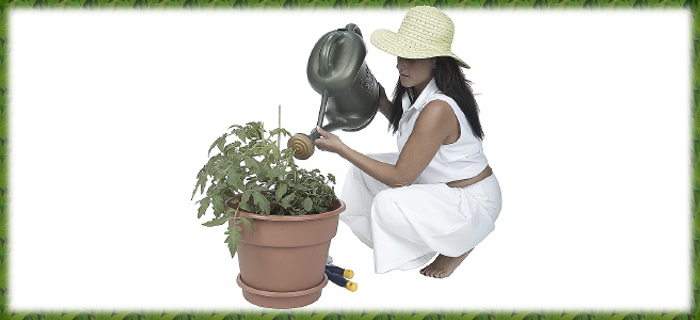Basics of Container Gardening

Anything can be grown in a container; there aren't many magical secrets to it. With the proper plant, soil, location and care, you can grow anything from trees to cacti in containers.
Containered plants can seem a tiny bit fussy. Not so. They just need the proper place and attention at critical times. If container gardening is new to you, here are a few simple starting tips.
Start with the soil
A light commercial potting mix is usually the best choice for most plants. Garden soil can be too sandy or clayey and probably doesn't have enough air spaces for the plant's roots.
If you live in a warm, dry area, consider adding polymer crystals to your planting mix, which expand as they take in water. They're similar to the crystals in disposable diapers. When the soil around them dries, they release water back to the plant.
A plant can exhaust the food supply in a pot. You might want to mix compost into your potting soil to add nutrients.
Pick your plants
Beginning with nursery-grown plants is the easiest method. If you like, many flowers and vegetables can be started from seeds right in the pot. Most plants, however, do better when started in an intensive little flat, then transplanted to their future home.
Especially good plants to seed directly into a container include:
- Lettuces
- Zinnias
- Basil
- Any squash
- Root vegetables like radishes
You can mix plants in a container. Aim for a mix of heights. With flowers, you might have a tall plant, several lower plants, and then maybe some that drape over the edges. Simply make sure the container is big enough to hold them all. You can put plants closer than you would in a garden, but you'll have to be vigilant about food and water.
If you want to grow vegetables, there are varieties bred especially for containers. Alternatively, you can use something generous enough for an entire zucchini plant.

Some good vegetable varieties for pots include:
- "Tom thumb" lettuce
- "Parmex" round carrots
- "Jingle Bells" bell peppers
- "Ronde de Nice" zucchini
- "Red Currant" tomatoes
- "Teddy Bear" sunflowers
- "Baby Boo" pumpkin
- "Lemon" cucumber
- "Easter Egg" radish
Choose your container
Containers come in all varieties, from standard narrow-bottom terra cotta pots to inventive plastic shapes. While some pots fit some plants better than others, generally, as long as the pot is big enough, you can use whatever suits your fancy. If you use something not originally intended for plants, make certain you poke enough holes for drainage.
Food and water
Watering can be critical, unless you live in a rain forest area. Plan to either water by hand or an automatic drip system. It's easy for pots to dry out in warm weather, even before you realize.
| Make manure or compost tea by hanging a bag of manure or compost in a bucket or trash can of water. Use a burlap bag, an old pillowcase, or an old t-shirt tied into a bag shape. When the water is nice and colored, use it undiluted as an occasional food, or dilute for every day watering. Put the "used" manure or compost into the garden soil or compost pile. |
On the other hand, most plants don't want wet feet, and they'll cheerfully die if overwatered. If you use catch saucers under your pots, make sure there isn't standing water in them. If your plants are outside, this will also prevent your saucers from becoming mosquito pools.
There are numerous commercial plant foods available. For a lower-cost alternative, consider making manure or compost tea (see sidebar) and using that to supplement your plants' diet.
Light is as critical to container plants as to any others. Most plants prefer full sun, but those that need some shade will pout if they don't get it. Fortunately, containers are portable. Take your plants to just the right light.
If you have to choose between skipping morning or afternoon light, most plants do okay in morning light, while many can find afternoon light too intense. Of course, it depends on the plant. Cacti, for instance, looooooooove to be bathed in bright light.
Bag those bugs!
Bugs can pester your plants in pots just as easily as well. Fortunately, they're easier to fight in a potted plant. Soapy sprays get rid of most of the common insects: ants, aphids, spittle bugs. You can handpick some other nasties like slugs and earwigs and scale insects. Isolate infested plants, so it doesn't spread.
If you live in an area with freezing weather, pots need special protection. You can bring most plants indoor to winter, as long as they get enough light and aren't too hot. Consider digging holes in the ground and sinking your potted plants for the cold season. This will only work if you don't get a hard ground freeze, though.
Simply begin. Don't do too much at first; if the container bug bites, you'll be surrounded with plants soon enough.
Contributing Editor Stefani Leto writes and parents in the Bay Area. Mother of an almost-five year old and an infant, she says nothing challenges her mind like parenting. Her work also appears at http://www.windowbox.com and http://www.folksonline.com/folks/ts/1998/pph.html.
